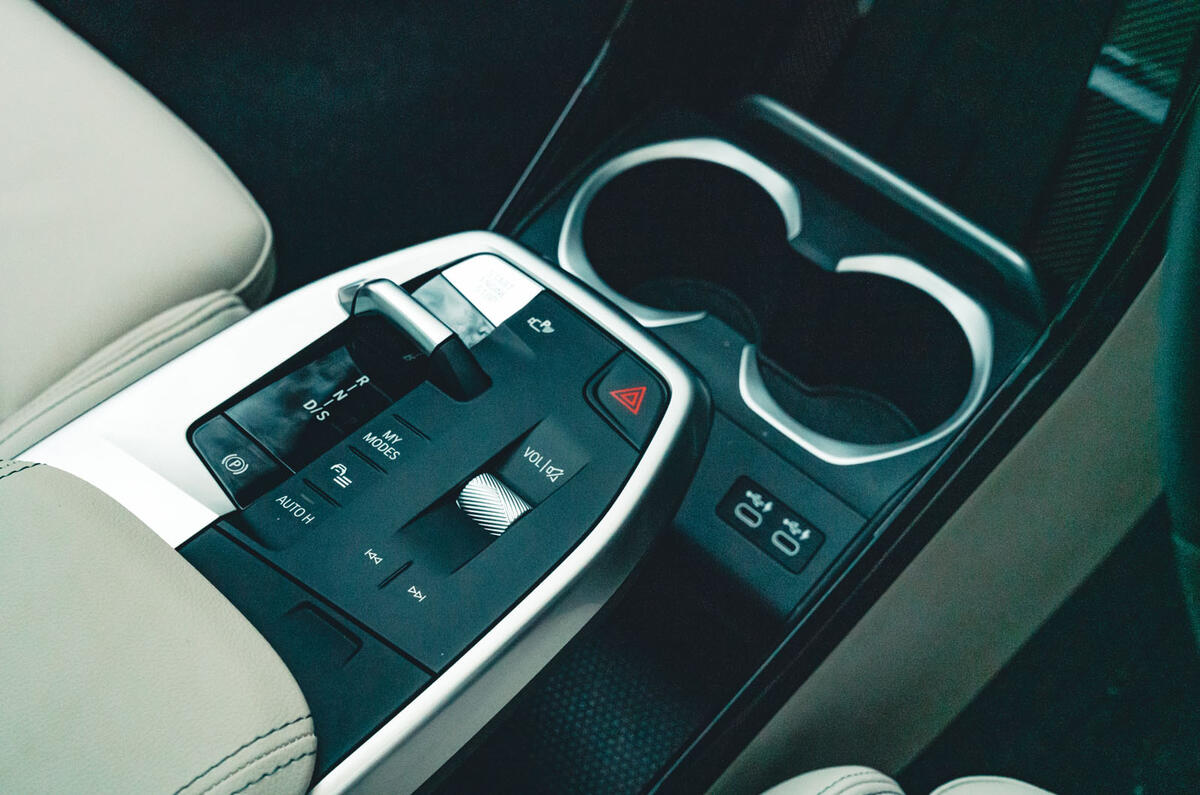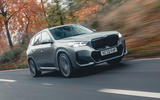The look of the latest X1 fits in perfectly with BMW’s new design ethos. That means a bluffer front end with bigger grilles and smaller lights at the front, as well as flush door handles and slimmer rear LED lights. Base models have more chrome highlights, plastic wheel arches and smaller wheels, but our M Sport with the M Sport Pro pack (enough M Sport for you?) blacks out the grille and door trim, and adds even more aggressive bumpers and 20in wheels. The current BMW X2 is more tall hatchback than SUV, but in time the X2 will be reborn as an X1 with a sloping roofline.
Mechanically, the new X1 uses an evolution of the same platform as the old car. It’s shared across all transverse-engined BMWs and Minis, but the latest version has been engineered to take a fully electric powertrain, as well as petrol and diesel engines. Even so, the battery-powered BMW iX1 makes do with a fairly modest 64.7kWh battery, for a WLTP range of 272 miles. With peak rapid charging of 130kW, it’s also a bit behind on that front.
The combustion-engine line-up is fairly familiar, though. While many manufacturers are scaling down their powertrain ranges to simplify production, BMW seems to be doing no such thing. Instead, there is the full gamut of three- and four-cylinder engines, as well as petrol and diesel power.
The more powerful 23i and 23d models additionally get standard four-wheel drive and 48V mild-hybrid assistance. In the X1, the 19bhp, 41lb ft electric motor is integrated into the gearbox, which allows it to boost the engine under acceleration. It can’t drive the car by itself, but it’s a lot less mild than most systems, which serve only to smooth out the start/stop system and run the ancillaries while the engine is off.

















































